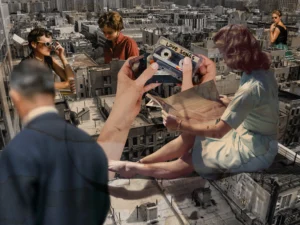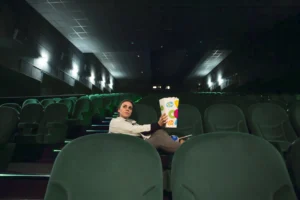The Rise and Fall of Hollywood Icons: From Stardom to Silence. At the height of their fame, Hollywood actors often seem untouchable—global icons celebrated for their talent, charisma, and mystery. But why does fame hit so hard in Hollywood? The industry has long crafted images as carefully as its scripts. Stars like Marilyn Monroe, James Dean, and Elizabeth Taylor were more than just performers; they were symbols—carefully branded by studios and elevated by a system designed to maximize allure and box office draw.
This golden aura isn’t accidental. The studio system of the early-to-mid 20th century was a powerful machine. Actors were signed to exclusive, long-term contracts, styled to perfection, and sent on press tours that built their public persona. These studios crafted celebrity as carefully as they crafted film plots. Icons like Clark Gable and Audrey Hepburn became eternal legends, with their off-screen lives blending into their on-screen roles. Learn more about the studio system and its star machinery.
Modern Stardom—Different Machinery, Same Spotlight
Today’s actors rise differently. With talent scouts, streaming deals, viral social media moments, and strategic PR campaigns, modern stardom often begins online before reaching the big screen. Actors like Timothée Chalamet or Zendaya command global attention not just through performances, but through curated identities and constant media visibility.
Still, the pressure is enormous. As the internet accelerates fame, it also accelerates scrutiny. For every hit film, there’s a wave of online commentary dissecting everything from their outfit choices to political stances.
💔 The Beginning of the Fall: Common Pitfalls
What Drives a Hollywood Star to Vanish?
Not every fall from fame is dramatic—but many are shocking. A-list actors can become cautionary tales overnight. But what causes this decline?
Public Image and Scandal
A single controversy—often amplified by 24/7 media cycles—can damage decades of goodwill. Stars like Kevin Spacey or Roseanne Barr saw careers collapse after allegations and online backlash. In Hollywood, public perception is a currency. Once that value drops, so does demand.
Typecasting and Career Stagnation
For others, the fall is slower. Typecasting has derailed many careers. Imagine trying to break away from a beloved character that defined your identity—like Macaulay Culkin in Home Alone. Audiences often resist seeing actors in new lights, and casting directors follow suit, making it hard to evolve.
Health, Addiction, and Mental Pressure
Some falls are rooted in personal struggle. The pressure of constant fame, public expectation, and long hours can lead to substance abuse or mental health decline. Judy Garland, despite her immense talent, faced lifelong struggles that ultimately shortened her life and career. A heartbreaking look at Judy Garland’s challenges.
Questions That Keep Fans Wondering
- Why do so many child actors vanish from the spotlight?
- How much control do stars really have over their careers?
- Can someone truly “bounce back” after a public downfall?
These questions drive the most frequent searches about Hollywood legends—and their answers are rarely simple. Some stars fade gracefully, others resist with public comebacks, and some, tragically, are never heard from again.
🎬 The Machine Behind the Spotlight: Hollywood’s Role in Fame and Obsolescence
Is Hollywood Itself to Blame?
Hollywood doesn’t just create stars—it discards them, too. Once an actor no longer fits the industry’s needs or public taste, the machine moves on. It’s a pattern deeply embedded in the system.
Throughout the decades, many actors have spoken out about the pressures placed on them by studios and producers. From being forced into exhausting promotional tours to maintaining fabricated personal lives, stars often have little control over their own narratives.
An infamous example is the story of Bette Davis, who took Warner Bros. to court in the 1930s to break free from a contract that restricted her creative freedom. Though she lost the case, her fight exposed the suffocating control studios held over actors.
Ageism and the Invisibility of Veteran Talent
One of the most painful realities of Hollywood is its relationship with aging—particularly for women. While male actors like George Clooney or Denzel Washington often enjoy long-lasting careers, women are frequently pushed into the background once they age out of “leading lady” roles.
Actresses like Debra Winger and Meg Ryan, once major stars, faced dwindling opportunities simply due to changing beauty standards and a youth-obsessed industry. In interviews, Winger has bluntly discussed her frustration with being sidelined—not for lack of talent, but for not conforming to an expected image.
When the Industry Turns Cold
- What happens when a blockbuster actor no longer sells tickets?
- Are talent and versatility enough to sustain a long career?
- Do awards guarantee job security?
The answers reveal the harsh truth: critical acclaim rarely ensures longevity. Winning an Oscar may open doors, but it can also pigeonhole actors. Cuba Gooding Jr. is a case in point—after his Jerry Maguire Oscar win, he struggled to find roles of similar depth or prestige.
🕵️♂️ Scandals, Silences, and Strategic Disappearances
Not every departure is a downfall. Some stars retreat by choice—burned out by the pressures of fame or seeking a simpler life. Others are strategically sidelined after scandals, often encouraged to “lay low” until public opinion softens.
Winona Ryder famously retreated from the spotlight after a 2001 shoplifting incident. Her return in Netflix’s Stranger Things marked one of the most successful comebacks in modern Hollywood—proving that the right role at the right time can rekindle a career. Discover how Ryder made her comeback.
Tabloids and Trial by Media
The rise of paparazzi culture and 24-hour entertainment news intensified the pressure. Stars like Lindsay Lohan and Britney Spears became headline fixtures, with personal struggles broadcast in real time. In many cases, media exploitation contributed to their professional downfall far more than their actual performances or choices.
Questions Fans Often Ask Online
- Did the media destroy certain careers?
- Can public forgiveness reverse a fall from grace?
- Are there modern stars at risk of fading like the icons of the past?
These questions reflect a growing awareness of the industry’s harsh cycle. For every actor that endures, there are dozens more who once filled screens and magazine covers—now lost in the quiet shadow of memory.
🔁 Comeback Kings and Queens: When Silence Turns to Applause Again
The Redemption Arc — Why Do Some Stars Return?
Not all falls are permanent. In Hollywood, the comeback story has become almost as iconic as the downfall itself. Certain actors return stronger than ever, often with new audiences, evolved roles, and a refreshed public image.
Robert Downey Jr. epitomizes this trajectory. Once plagued by legal troubles and substance abuse, his casting as Iron Man in 2008 marked not just a return, but a reinvention. It also redefined superhero films and opened the door for other actors once considered “unreliable.”
How Reinvention Can Rewrite a Career
Some actors shift genres or even platforms to stay relevant. Matthew McConaughey, who was largely boxed into rom-coms in the 2000s, stunned critics with his dramatic turn in Dallas Buyers Club and True Detective, sparking the so-called “McConaissance.”
This evolution often involves risks—turning down typecast roles, seeking independent films, or embracing television when it was once seen as a “lesser” medium. But for those who succeed, the payoff is significant.
Streaming: The Unexpected Savior
Streaming platforms like Netflix, Prime Video, and Hulu have breathed new life into dormant careers. Neve Campbell returned to mainstream popularity through shows like House of Cards, while Winona Ryder’s resurrection via Stranger Things proved that nostalgia-powered vehicles can revive 80s and 90s stars for new generations.
Key Takeaway: Reinvention doesn’t happen by accident. It requires timing, talent, and the courage to take risks outside the Hollywood comfort zone.
🧠 The Psychology Behind the Rise and Fall
Mental Health and the Cost of Fame
What audiences often forget is the toll that fame exacts. The constant scrutiny, criticism, and pressure to perform can erode even the strongest individuals.
Actors like Heath Ledger and Robin Williams opened up deeper conversations about mental health in Hollywood—though tragically, only after their deaths. While their falls weren’t career-related, they underscore how silence often hides deep personal battles.
Explore the link between fame and mental health.
Fame as a Psychological Trap
Psychologists have long studied the effects of celebrity. Many liken the experience to trauma, especially for those who rise too quickly or too young. The loss of anonymity, identity, and a sense of control can be overwhelming.
Child stars, in particular, face extreme versions of these challenges. Macaulay Culkin and Amanda Bynes are prime examples of how early fame without support structures can lead to a painful fallout.
Can Public Sympathy Revive a Star?
Sometimes, empathy from fans sparks a return. Brendan Fraser’s comeback—dubbed “The Brenaissance”—was bolstered by public awareness of his personal struggles and mistreatment in the industry. His Oscar-winning performance in The Whale felt as much a cultural apology as a celebration of talent.


